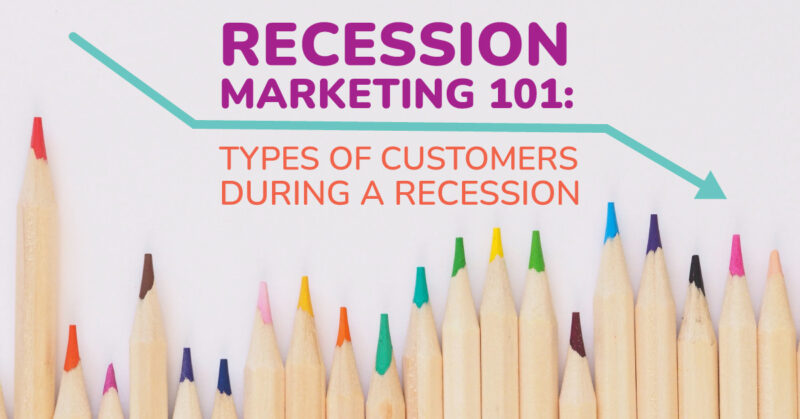Recession Marketing 101: Types of Customers in a Recession

The dreaded “r” word – recession – seems to be on everyone’s mind lately. And it’s no wonder – between inflation and the slow economic recovery from the pandemic, things do feel somewhat precarious. And even in normal times, a recession happens on average once every 6.5 years. If you have a business for any length of time, you’re likely to face some degree of recession at some point.
We’ve already discussed whether you should advertise during a recession. (We recommend diving into the whole article for details, but the short answer is that you might not be able to afford not to!) But once you’ve decided to keep your ads going during economic hard times, what’s next?
No two downturns are exactly alike – but some consistent patterns observed from past recessions can help you know what to expect. In this series, we’ll be diving into what you need to know. We’ll start with the different types of customers you can expect in a recession.
Consumers’ changing habits
One of the most important things you can do as a business owner is to understand who your customers are, either by using target markets or creating buyer personas. But when you throw a recession into the mix, that can affect your carefully considered customer profiles. For the vast majority of consumers, economic hard times are going to affect their behavior to at least some degree, and you’ll need to adapt your marketing efforts as a result. That’s why it’s important to understand how people tend to act when the economy falls on hard times. Here’s what you need to know:
Types of customers in a recession: Penny Pinchers
Consumers in this group feel the need to stop their spending in its tracks as much as possible. They usually fall into the lower end of the income spectrum, though even middle- or higher-income consumers may find themselves here if they’re especially anxious or facing big life changes. Messaging for these consumers is to be treated carefully – if you want to target them at all. Ads that have a pressuring or tone-deaf message could turn these customers off, maybe for good.
Types of customers in a recession: Treat Seekers
Let’s face it – pinching pennies in tough times can be frustrating and exhausting, and sometimes you need a little reward. While this group of consumers definitely feels the effects of economic hard times, they’re also looking for the occasional splurge or treat. This group also includes consumers who continue to window shop. They may not be making as many purchases as they would in normal times, but they’re not stopping their spending as much as the money conscious group. They’ll be willing to spend if your product or service really connects with them. And even if they’re not ready to purchase from you while the recession is on, they might keep you in mind for when they feel a little more secure. If you’re willing to play the long game for those potential customers, a good branding campaign could go a long way.
Types of customers in a recession: Stable Earners
Of all the types, people in this group are the least likely to change their habits. This is also the smallest group, falling somewhere around the top 5% of earners. If your product or service is already targeted at this group, you probably won’t have to change your messaging much, if at all. But if this group isn’t much of a part of your desired audience, you will almost certainly have to adjust your tone.
Types of customers in a recession: Carefree Spenders
Generally speaking, this group skews younger and less anxious. (They’re probably living through their first recession as an adult.) They’re a little harder to predict, but as long as they’re employed, they will continue to spend. However, sudden unemployment would likely push them into the money conscious group.
In the rest of this series, we’ll cover how you should look at your product or service during a recession and some general tips. But now that you know the basic types of customers in a recession, here are some questions to get you started:
- Into which categories do most of my customers fall?
- Should I reach out to lower-income customers?
- If I reach out to lower-income customers, how should my messaging be affected?
- Does the tone of my overall messaging need to be adjusted, or can I carry on as normal?


